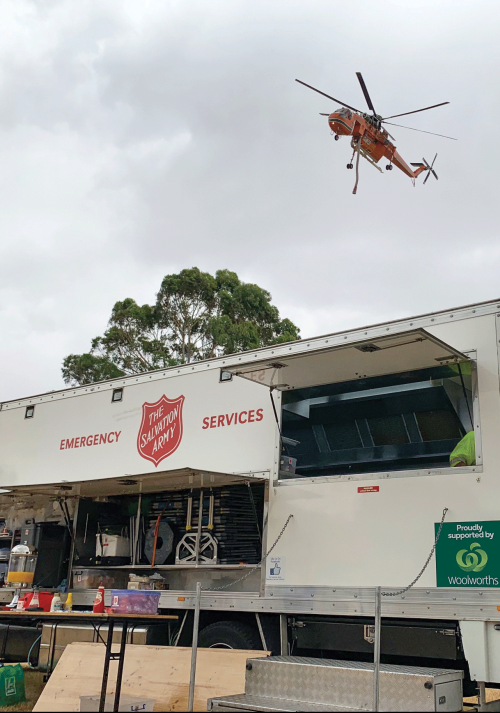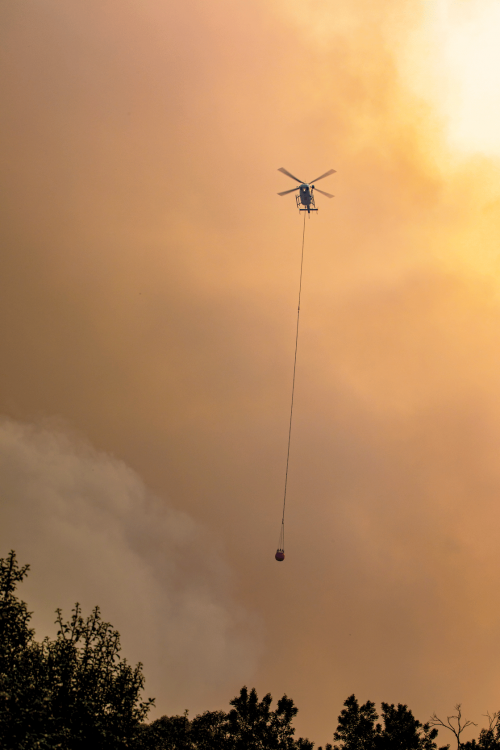You are not alone
31 March 2020
The Salvos offer wide-ranging assistance through the bushfires and beyond.

As we conclude the first month of 2020, the lives of so many Australians have been, and still are being, impacted by the devastating bushfires across the country. We have seen a tragic loss of life, count-less homes and buildings destroyed and millions of animals killed. Thousands of people are displaced; firefighters and other emergency services personnel and volunteers are exhausted; and communities are grieving and traumatised.
The nation knows that an extremely challenging period lies ahead, and that the road to healing, restoration and regeneration is a long and complex one.
Despite the heartbreak and destruction, we are also hearing many stories of courage, sacrifice and resilience, of communities uniting to help each other through the crisis and rebuild, of locals volunteering to help wherever they can, and people around the world sending encouragement and donating to disaster appeals.
There is hope, and there is help available in the process of rebuilding lives, livelihoods and communities — one step at a time.
The Salvation Army, along with other organisations, has been active across affected states, working in partnership with local corps (churches) and their community volunteers and supporters, to provide assistance in a range of ways.
Salvation Army officer (minister) Topher Holland, General Manager Strategic Emergency and Disaster Management, said The Salvation Army was working across two disaster response phases. “The nature of this unprecedented and ongoing disaster means that in some areas we have moved into our recovery phase and, in other areas, we are still providing emergency response.”
He said the organisation’s response to disasters occurs in several phases, the first being initial Salvation Army Emergency Services (SAES) activations where personnel and volunteers feed and provide support for first responders such as firefighters and police, and assist with the management and service of evacuation centres where people directly impacted by disasters are sheltering.
Phase two is an initial assessment and provision of emergency financial support to those affected, and phase three is the recovery phase, again providing financial support for those affected, following a more detailed assessment of the individual or family’s needs.
MOVING FORWARD

Even as the fires continued to rage around the nation, Salvation Army officer Sue Hopper, Strategic Emergency and Disaster Management Specialist, and her team, were actively working to assist with recovery efforts, and have already begun the assessment and distribution process in several regions, and planning a strategy to move forward and provide further support to those impacted.
“We are providing Salvation Army grants from our public appeal to people who have lost their homes, as well as offering a listening ear, support and hope,” said Sue.
“What we’re doing is immediate help and gives people a bit of hope — something to move forward with one step at a time.”
Additional Salvation Army services such as Moneycare (financial counselling), Salvos Stores, and Doorways (emergency relief and holistic case management with referral to internal and external support services), will also be available over the coming weeks, months and years, and combine with the care, compassion, understanding, social connections and ongoing support from local corps.
“We want to let people know they are not alone,” said Salvation Army officer Leanne Hardaker. “We also want people to know that we are there and available for them as The Salvation Army.”

Comments
No comments yet - be the first.